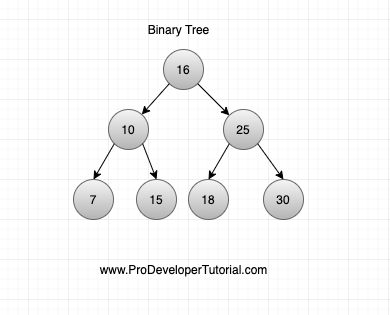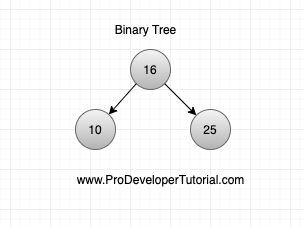Question:
Given a binary tree root node and a level, display all the nodes present in that level.
Example:
Consider the image given below:

Form the image above,
Nodes at level 1 are : 16
Nodes at level 2 are : 10, 25
Nodes at level 3 are : 7, 15, 18, 30
Solution:
This problem can be solved by recursive traversal, by using below logic:
if(level == 1)
{
print(node->data)
return;
}
display_at_given_level(node->left, level - 1);
display_at_given_level(node->right, level - 1);
Assume if you have only one node, and the level is 1.

Then it will satisfy the if condition and print the node value.
Suppose,
Now you have a tree as below and level is 2:

First you go to root node, from there you will recursively call “display_at_given_level” for the left node while reducing the given level.
Now, the if condition is met, and you will print the left node.
Similarly, you will call “display_at_given_level” for the right node while reducing the given level.
Now, the if condition is met, and you will print the right node.
Solution in C++
#include <iostream>
using namespace std;
// structure to hold binary tree node
struct Node
{
int data;
Node *left, *right;
Node(int data)
{
this->data = data;
this->left = this->right = nullptr;
}
};
void display_at_given_level(Node* node, int level)
{
//base case
if (node == NULL)
{
return;
}
//base case
if(level == 1)
{
cout<<node->data << " ";
return;
}
display_at_given_level(node->left, level - 1);
display_at_given_level(node->right, level - 1);
}
int main()
{
Node* root = nullptr;
/* Binary tree:
16
/ \
/ \
10 25
/ \ / \
/ \ / \
7 15 18 30
*/
root = new Node(16);
root->left = new Node(10);
root->right = new Node(25);
root->left->left = new Node(7);
root->left->right = new Node(15);
root->right->left = new Node(18);
root->right->right = new Node(30);
int level = 2;
cout<<"Solution = " <<endl;
display_at_given_level(root, level);
return 0;
}
Output:
Solution =
10 25